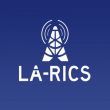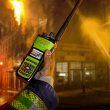P25-Tetra Comparison is a Non-Starter
A proposed comparison of Project 25 (P25) and Terrestrial Trunked Radio (TETRA) technologies — focal public-safety communications standards in North America and Europe, respectively — will not be conducted, according to an official for the National Public-Safety Telecommunications Council (NPSTC).
“Basically, the comparison is dead in the water,” said Tom Sorley, NPSTC’s technology committee chairman. “It’s not going to happen.”
In November, NPSTC board members voted to proceed with an effort to provide a written comparison of radio systems using P25 and TETRA technologies to educate users on the differences between the technologies. NPSTC agreed to provide a format for the proposed comparison, but the organization said it lacked the resources to do the comparison work and asked for help from the TETRA Association and the P25 Steering Committee.
Sorley said the TETRA Association claimed the proposed scope of the comparison was “way too big” but indicated it might be willing to participate if the scope of the project was narrowed. Meanwhile, representatives of the P25 group said it believe the TETRA Association should pay all costs regarding the proposed comparison, which effectively ended discussions on the matter, he said.
“I’m a little disappointed, but you have to recognize when you can’t really roll the rock up the hill,” Sorley said. “You have to stop at some point.”
Although no formal comparisons have been done, most public-safety officials believe TETRA works well in dense urban environments that are commonplace in Europe but would be too expensive to deploy in vast rural areas that are prevalent in United States.
Other barriers to introducing TETRA in the U.S. include the fact that the European technology was not designed to handle the interference found in the U.S., vendor giant Motorola — owner of most TETRA intellectual property — has signed international agreements promising not to sell TETRA in the U.S., and that such a move could undermine the efforts to make P25 a national interoperability standard.

















